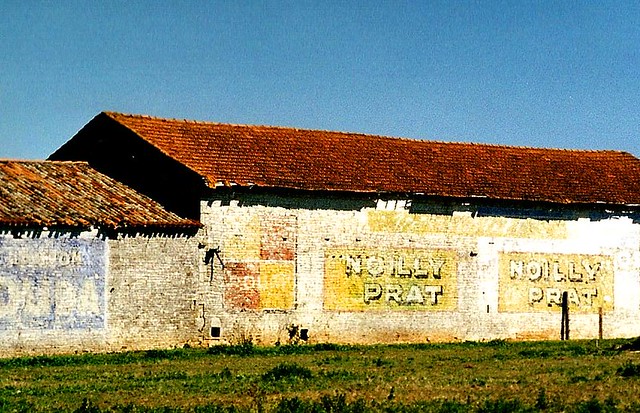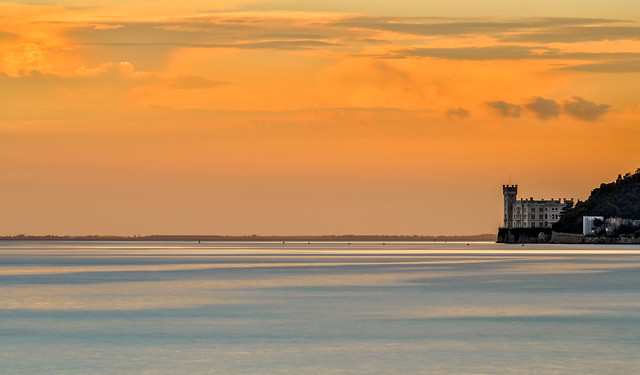
CRAFTED WITH CHARACTERS
A collection of our thoughts on whiskey, spirits
&
the world
Three Variations on the 2nd Best Old Fashioned
Few cocktails have have captured the minds of the thirsty public or generated as much interest in the past two centuries as that old Bourbon standby, the Old Fashioned.
Few cocktails have have captured the minds of the thirsty public or generated as much interest in the past two centuries as that old Bourbon standby, the Old Fashioned.
The History of the Old Fashioned: Sazeracs to Martinis
Sure, the Martini had its heyday in those dark days when whiskey was merely an afterthought of the spirits-sipping population. Then there’s the Manhattan -- one of our unanimous favorite cocktails here at ASW Distillery -- named after perhaps the most famous city on earth.
And, of course, the alleged fountainhead of all cocktails, the Sazerac, hails from mid-1800s New Orleans, when a certain Sewell Taylor sold his bar to become an importer of the Sazerac-de-Forge et Fils brand of cognac that entrepreneur Aaron Bird (who bought Taylor’s bar) mixed into his “Sazerac Cocktail”. The cocktail just happened to include local bitters from Antoine Amedie Peychaud, the inventor of Peychaud’s. After an epidemic devastated French vineyards and drove up cognac prices, the Sazerac began to dress up the corn-and-rye-based swill floating down the Mississippi River instead. Like the Manhattan, the Sazerac is a favorite of ours at the distillery. In fact, we make a mean one as part of our cocktail program, which you can enjoy any Thursday, Friday, or Saturday during our tasting hours.
But since the Bourbon Old Fashioned’s formalization in Louisville, Kentucky, and subsequent popularization at the Waldorf-Astoria Hotel in New York, the Old Fashioned has been a go-to staple of everyone from creator of fictional lands, George Lucas, to fictional creator of ads, Don Draper in Mad Men, who consumed enough of them to send chills down Winston Churchill’s spine.
The word “cocktail” arose in the early 1800s, when an editor of New York’s The Balance and Columbian Repository defined the drink as a mixture of spirits, bitters, water, and sugar. But as the 1800s progressed from gas lamps to electric street lights, barkeeps had begun concocting cocktails with a wider array of modifiers -- everything from orange curaçao to absinthe (as in the case of the Sazerac). In the 1860s, tipplers began to long for the “good old days” of the cocktail, perhaps as a response to the psychological impact of the Civil War.
I'll Have It the 'Old Fashioned' Way
Soon, the “old fashioned” way of making cocktails came back into fashion, featuring just spirits, bitters, water, and sugar. A barkeep from Chicago mentioned that the most popular base spirit in the Old Fashioned of the 1870s was whiskey (albeit rye at the time, rather than bourbon). But the name “Old Fashioned” as a proper noun hadn’t yet entered the common vernacular. For that, we can credit Louisville, Kentucky’s gentleman’s club, the Pendennis Club, founded in 1881. A bartender in the city devised the delicious concoction to consist of lots of bourbon, a little water and sugar, and a hint of bitters and orange. James E. Pepper, a well-known whiskey distiller of the day, transported this newly named “Old Fashioned” cocktail to New York City’s Waldorf-Astoria Hotel, and the rest is history.
In 2015, Louisville even named the Old Fashioned as its City Cocktail, creating a two-week celebration of the drink in its annual “Old Fashioned Fortnight”. How many other boozy drinks can claim to be the cocktail representing an entire city?
But an Old Fashioned is more than just the spirited sum of sugar, water, bourbon, bitters, and a stale bar garnish like a desiccated orange peel or canned cherry. There is an art to the Old Fashioned that requires balance and imagination. To that end, we here at ASW Distillery have experimented with numerous variations on the Old Fashioned theme over the years, three of which we finally got to unveil to guests in 2017.
New GA Laws: Vetting Our Old Fashioned Recipes
How’s that? Well, when Georgia updated its distillery laws that took effect on September 1, 2017, the law finally permitted us as a distiller of spirits to serve cocktails directly to the public. We were suddenly transformed from distillery with a nice tasting room into a sort of cocktail bar (albeit with tighter hours) serving up delicious & inexpensive cocktails right across the street from SweetWater Brewery.
For our first cocktail menu, we included classics like a Southern Mule (made with bourbon and local bitters heroes, 1821 Bitters Ginger Beer), a Sazerac, and, of course, one of our Old Fashioned recipes.
The night of Sept. 1, when we unveiled the new cocktails, one patron paid us the weighty compliment: “That’s the 2nd best Old Fashioned I’ve ever had.” Thing was, he couldn't remember the first. So we assumed either it was a fine specimen of boozy goodness, or the patron was concerned with grade inflation.
In either event, the compliment tickled us better than Elmo, and ever since that fateful, ego-stroking evening, we’ve come to calling our Old Fashioneds the “2nd Best Old Fashioneds”.
So without further ado, we present to you, the Three 2nd Best Old Fashioned Recipes we’ve concocted over the years of making & savoring whiskey.
The Three 2nd Best Old Fashioned Recipes
The 2nd Best Old Fashioned Recipe No. 1
For this one, the splash of fresh orange juice is key, brightening up the cocktail for a perfect spring, summer, and (in the hot South) fall sipper. It pairs well with your lips, when you’re looking for something delicious.
- 2 oz Fiddler Unison Bourbon
- ⅓ oz Simple syrup
- 5 drops 1821 Prohibition Aromatic Bitters
- 5 drops 1821 Tart Cherry Saffron Bitters
- Splash Fresh orange juice
- Orange peel (for garnish)
Combine ingredients over ice, stir & strain into rocks/lowball glass over 2-3 ice cubes. Express* orange peel, rub around the rim, and drop into the glass.
*To “express” just means to squeeze it above the cocktail with the peel facing down, towards the cocktail.
The 2nd Best Old Fashioned Recipe No. 2
As pioneers in Southern pot-still spirits, this is the most traditional of the recipes we’ll put our stamp of approval on. It pairs well with cigars & fond memories of yesteryear.
- 2 oz Fiddler Unison Bourbon
- 2 tsp warm water
- 1 tsp raw sugar
- 3 dashes Angostura bitters
- Orange wedge (for garnish)
Stir sugar, bitters & water in a glass until the sugar is dissolved. Add 5-7 ice cubes and pour Fiddler over. Stir 20-30 seconds to chill cocktail & dilute whiskey, then strain into rocks/lowball glass. Garnish with orange wedge.
The 2nd Best Old Fashioned Recipe No. 3
This is the funkiest of the bunch, the proverbial wild child that pays homage to Georgia’s excellent, but often underappreciated, climate for some varieties of figs (specifically, “Brown Turkey” figs). It comes from our friends in Decatur, Georgia’s No. 246, just a hop, skip & a jump from our distillery.
- 2 oz Fiddler Unison Bourbon
- 2 tsp Fig cordial*
- 1 tsp Balsamic vinegar
- Regan’s Orange Bitters
- Lemon peel (for garnish)
So there you have it. Three variations of the 2nd Best Old Fashioned cocktail, as told by our distillery, which now just so happens to be a lively cocktail outpost as well. We hope you find these enjoyable, and likewise hope you'll join us for one at our tasting room some time in the not-too-distant future.
Cheers,
-Chad & The ASW team
Vermouth truth: your guide to world vermouths
Imagine yourself on the high, arid Iranian plateau around 5,400 BCE. The Copper Age has started to the west, and agricultural practices have swept across the region, stabilizing food sources for the first time. Now that you’ve checked off food and shelter on your cave art checklist, what’s next on your list of necessities? Wine. And in fact, archaeologists have unearthed the world’s oldest-known wine jar with traces of herbs in Tepe Hajji Firuz, Iran, along Turkey’s eastern border near Iran’s 10th largest city, known as the “Paris of Iran”, Urmia.
Imagine yourself on the high, arid Iranian plateau around 5,400 BCE. The Copper Age has started to the west, and agricultural practices have swept across the region, stabilizing food sources for the first time. Now that you’ve checked off food and shelter on your cave art checklist, what’s next on your list of necessities?
Wine.
And in fact, archaeologists have unearthed the world’s oldest-known wine jar with traces of herbs in Tepe Hajji Firuz, Iran, along Turkey’s eastern border near Iran’s 10th largest city, known as the “Paris of Iran”, Urmia.
Wine production rippled throughout the world in the intervening years. Both the ancient Greeks and Chinese placed a premium on wines flavored with herbs and spices as early as 1,200 BCE. (News traveled slower in the days before trains and telegrams.)
Today, you can’t enjoy a Manhattan without a good red vermouth, or a bracingly cold Martini without at least a whisper of a dry white vermouth. But beyond being “wine with herbs”, what exactly is vermouth? Read on for jarfuls of knowledge droplets.
Aromatized and Fortified Wines
In their simplest form, “aromatized wines” are nothing more than wine flavored with aromatic botanicals. When you take them a step further by adding spirits to give them a longer shelf life, they become “fortified wines”. The undisputed leader in fortified/aromatized wines is vermouth.
While the EU has a set of specific standards for vermouth (certain sugar levels, required base of at least 75% wine), the US requires little more than that vermouth have “ characteristics attributed to vermouth”. It’s kind of like defining a car as a machine with normal car features. Strange, right?
Of course, vermouth isn’t the only type of aromatized wine. Iberian sangria; Italian clarea and zurra; German variations like Kalte Ente, Gluhwein, and Maiwein used to help celebrate the ancient fertility rite of May Day — they’re all types of aromatized wine.
But when it comes to spirits, vermouth reigns supreme in both classic and au courant cocktails.
The name vermouth comes from the German name for the bitter herb wormwood: vermut. You may recall wormwood from folklore as one of the original psychotropics, in absinthe. Researchers have since refuted this claim, instead pointing out that the “hallucinatory effects” of absinthe were likely due to its alcohol content rivaling that of Everclear.
So when you sip vermouth in a cocktail or on its own — yes, straight-sipping vermouth is totally a thing — have no fear, as vermouth is made of wine, harmless wormwood, and other herbs depending on the brands you’ll see below. We’ve split our list into the two main styles of vermouth — dry white (oft-used for martinis) and sweet red (oft-used for Manhattans, Negronis, and other cocktails with sweet notes).
Dry whites
Dolin
- Style: Dry white (most popular expression)
- Flavor profile: Light, clean, dry white vermouth
- Ideal cocktail: 50–50 Martini
Created around 1830 in France’s vermouth hotbed of Chambery near the mountainous border of Italy and Switzerland, Dolin produces 4 expressions:
- Dolin Rouge — a full-bodied red vermouth drier than most on the market,
- Dolin Dry — a light, clean, dry white vermouth,
- Dolin Blanc — an herbal and slightly sweet vermouth,
- Chamberyzette — a combination of Dolin Dry and strawberry juice.
We’ve found Dolin Blanc to play quite nicely with our silver whiskey, American Spirit Whiskey, in a riff on the Manhattan, courtesy of our friends at the Lobby Bar located in Atlanta Hartsfield-Jackson Airport Marriott.
Noilly Prat
- Style: Dry white (most popular expression)
- Flavor profile: Marsala, chamomile, gentian
- Ideal cocktail: Traditional Martini
Another vermouth of French origin, Noilly Prat is generally reminiscent of marsala and is made in Marseillan (not to be confused with Marseilles —which is 130 miles away). The producer’s 3 different styles are:
- A dry white with chamomile and gentian
- A sweet red with saffron and cloves
- A mellow “ambre” expression with cardamom and lavender
Stock SpA
- Style: Dry white
- Flavor profile: Combination of 50 herbs, seeds & spices, many of them bitter
- Ideal cocktail: Martini
The only Italian vermouth-maker on our list not based in Turin, Stock SpA nonetheless produces a complete line of Torino-style vermouths at its Trieste, Italy headquarters near the Slovenian border along the Adriatic Sea. These include a sweet red, a dry white, and an orange-forward version called “Gran Gala”.
Prior to World War I, Trieste was a Slovenian province of the Austro-Hungarian empire. As part of the London Treaty of 1915, in which Italy secretly joined the side of the Allies against Germany, Italy received the region surrounding Trieste. They promptly annexed it.
For the next 41 years, the city witnessed strife amongst Slovenian nationals, Italian emigres, Nazi troops, and Yugoslav communists. (Residents at this time may have found it unfortunately coincidental that the city’s name, though linguistically unrelated, is one letter removed from the French word for sad, triste.)
In 1947, the UN officially recognized Trieste as an independent city-state, until an accord in 1954 officially transferred the city and surrounding area to Italy as a civil administration.
Today, the city’s active port has made the region one of Italy’s wealthiest, and in 2012, LonelyPlanet.com rated Trieste as the most underrated travel destination in the world.
Intermission: We love to chat about all things spirits. If you like what you're reading, consider becoming a Supporting Reader.
Sweet Reds
Carpano Antica
- Style: Sweet red
- Flavor profile: Licorice, figs, cocoa, vanilla
- Ideal cocktail: Blood & Sand
You're probably thinking: It really looks like they walked to their local bottle shop, took a bottle of Carpano Antica off the shelf, placed it on the floor where the natural lighting was good, snapped a photo, and then poorly cropped the photo so you can see plastic racks in the upper corners. You'd be entirely off-base in thinking this.
Turin, in northwest Italy not far from France’s Chambery region, has long been the world’s epicenter for red vermouth. Carpano Antica started it all in 1786, creating a high-end red vermouth from an ancient recipe. Tipplers often referred to it as vermouth alla vaniglia because it incorporates subtle hints of vanilla.
Cocchi di Torino
- Style: Sweet red
- Flavor profile: Red fruit, orange, herbs
- Ideal cocktail: Negroni
Cocchi di Torino is the only vermouth in Italy that qualifies for Italy’s Vermouth di Torino DOC status, similar to qualifying for “Cognac” or “Calvados” status in France. With a base of moscato, Cocchi di Torino is sweeter and more floral than other red vermouths, which are often more herbal. (As an aside, almost all vermouths are made from white wine grapes like moscato, even the vast majority of red vermouths.)
Many cocktail enthusiasts and mixologists, including Atlanta’s own Greg Best, insist that the perfect Negroni relies on the intense bitter orange of Campari (a constant) and Cocchi di Torino as its vermouth.
Martini & Rossi
- Style: Sweet red (most popular expression)
- Flavor profile: Sweet, herbal, vanilla
- Ideal cocktail: Manhattan
The owners of the afore-mentioned Noilly Prat, the Martini & Rossi company also produces the Martini brand of vermouths — perhaps the most ubiquitous vermouth brand in the US. Like all the other Italian vermouths mentioned previously, Martini & Rossi produces their white/dry and red vermouths in Turin.
P. Quiles
- Style: Sweet red (most popular expression)
- Flavor profile: Floral, cinnamon, ginger, nutmeg
- Ideal cocktail: Spanish Warmth
These days, Spain is the third-most gin-thirsty nation in the world. With a taste for gin comes a very real need for vermouth (or whispers thereof), and since the 1780s, Primitivo Quiles has unselfishly been there for Spain’s residents and their thirst.
Unlike most other vermouth producers, P. Quiles uses red wine grapes as its base. And despite producing its vermouths in Alicante, Spain, along the sunny Balearic coast, some critics have described P. Quiles’ red Mourvedre grape-plus-herb vermouths as exhibiting an “Alpine” style.
Punt e Mes
- Style: Sweet red
- Flavor profile: Bitter orange, coffee, cola
- Ideal cocktail: Americano
Not far from where Cocchi di Torino is produced in Italy’s Piedmont region sits the site of Punt e Mes, Italian for “point and a half”.
What does point and a half mean?
The story goes that Piedmontese stockbrokers would signal with their thumb up and a swipe of their palm, letting the barkeep know they wanted 1 part vermouth with 1/2 part bitters. In the process, these swilling stockbrokers established an entirely new style of vermouth: vermouth con amari, or red vermouth with bitters.
“New world” producers
Some have taken to calling vermouths made in the US as “new world” vermouths.
Companies qualifying for this nouveau-riche-sounding classification include California’s Vya Vermouth, Brooklyn’s Uncouth Vermouth, Oregon’s Ransom Spirits Vermouth.
Their flavor profiles range the gamut, but they are all more delicious than the “new world” designation otherwise suggests.












